Great choice! Your favorites are temporarily saved for this session. Sign in to save them permanently, access them on any device, and receive relevant alerts.
- Sailboat Guide

29ER is a 14 ′ 7 ″ / 4.5 m monohull sailboat designed by Bethwaite Design and built by MacKay Boats Ltd., Ovington Boats Ltd., Xtreme Sailing Products, Performance Sailcraft, and Nautivela starting in 2001.

- 2 / 16 Kirkland, WA, US 29ER $5,000 USD View
- 3 / 16 Kirkland, WA, US 29ER $5,000 USD View
- 4 / 16 Kirkland, WA, US 29ER $5,000 USD View
- 5 / 16 Kirkland, WA, US 29ER $5,000 USD View
- 6 / 16 Kirkland, WA, US 29ER $5,000 USD View
- 7 / 16 Kirkland, WA, US 29ER $5,000 USD View
- 8 / 16 Kirkland, WA, US 29ER $5,000 USD View
- 9 / 16 Kirkland, WA, US 29ER $5,000 USD View
- 10 / 16 Kirkland, WA, US 29ER $5,000 USD View
- 11 / 16 Kirkland, WA, US 29ER $5,000 USD View
- 12 / 16 Kirkland, WA, US 29ER $5,000 USD View
- 13 / 16 Kirkland, WA, US 29ER $5,000 USD View
- 14 / 16 Kirkland, WA, US 29ER $5,000 USD View
- 15 / 16 Kirkland, WA, US 29ER $5,000 USD View
- 16 / 16 Kirkland, WA, US 29ER $5,000 USD View

Rig and Sails
Auxilary power, accomodations, calculations.
The theoretical maximum speed that a displacement hull can move efficiently through the water is determined by it's waterline length and displacement. It may be unable to reach this speed if the boat is underpowered or heavily loaded, though it may exceed this speed given enough power. Read more.
Classic hull speed formula:
Hull Speed = 1.34 x √LWL
Max Speed/Length ratio = 8.26 ÷ Displacement/Length ratio .311 Hull Speed = Max Speed/Length ratio x √LWL
Sail Area / Displacement Ratio
A measure of the power of the sails relative to the weight of the boat. The higher the number, the higher the performance, but the harder the boat will be to handle. This ratio is a "non-dimensional" value that facilitates comparisons between boats of different types and sizes. Read more.
SA/D = SA ÷ (D ÷ 64) 2/3
- SA : Sail area in square feet, derived by adding the mainsail area to 100% of the foretriangle area (the lateral area above the deck between the mast and the forestay).
- D : Displacement in pounds.
Ballast / Displacement Ratio
A measure of the stability of a boat's hull that suggests how well a monohull will stand up to its sails. The ballast displacement ratio indicates how much of the weight of a boat is placed for maximum stability against capsizing and is an indicator of stiffness and resistance to capsize.
Ballast / Displacement * 100
Displacement / Length Ratio
A measure of the weight of the boat relative to it's length at the waterline. The higher a boat’s D/L ratio, the more easily it will carry a load and the more comfortable its motion will be. The lower a boat's ratio is, the less power it takes to drive the boat to its nominal hull speed or beyond. Read more.
D/L = (D ÷ 2240) ÷ (0.01 x LWL)³
- D: Displacement of the boat in pounds.
- LWL: Waterline length in feet
Comfort Ratio
This ratio assess how quickly and abruptly a boat’s hull reacts to waves in a significant seaway, these being the elements of a boat’s motion most likely to cause seasickness. Read more.
Comfort ratio = D ÷ (.65 x (.7 LWL + .3 LOA) x Beam 1.33 )
- D: Displacement of the boat in pounds
- LOA: Length overall in feet
- Beam: Width of boat at the widest point in feet
Capsize Screening Formula
This formula attempts to indicate whether a given boat might be too wide and light to readily right itself after being overturned in extreme conditions. Read more.
CSV = Beam ÷ ³√(D / 64)
Length including bowsprit: 20.8’/6.15m Spinnaker area: 205sq ft/19m2
Embed this page on your own website by copying and pasting this code.

- About Sailboat Guide
©2024 Sea Time Tech, LLC
This site is protected by reCAPTCHA and the Google Privacy Policy and Terms of Service apply.
Performance
Accomodation.
Report error
Tell us what's wrong
We do our best to fix any errors in boatpedia. thanks for the help.

FAST AND MODERN HIGH-PERFORMANCE INTERMEDIATE SKIFF
The 29er is a two-person high-performance sailing skiff designed by Julian Bethwaite and first produced in 1998.

More About 29er
In summary:.
Junior Sailors
A 2-person boat that is renowned for its competitive racing scene and high-performance fun.
Age & Weight Range For The 29er Class:
The 29er is typically sailed from 14 to 19 years of age as a youth class. The ideal weight range is 110kg to 140kg, often sailed by mixed male and female teams, but also sailed by all female and all male crews.

About The 29er Class
The 29er is a two-person high-performance sailing skiff designed by Julian Bethwaite right here in Australia – the same designer who also created the Olympic 49er class. First produced in 1998, the 29er skiff quickly gained momentum around the globe, with over 3000 boats on the water and up to 200 competitors attending large 29er class regattas.
The 29er is able to reach high speeds fairly quickly, with its sleek and hydrodynamic hull offering a myriad of benefits. A 29er skiff will often exceed the wind speed when planing both up and downwind.
Features & Benefits of the 29er skiff
The 29er is often lauded as the best youth sailing boat available in the world today. In terms of design, the 29er is a double-handed, single-trapeze skiff with a self-tacking jib and asymmetric spinnaker.
When it comes to the 29er, the focus is truly on speed and performance, though the exceptional quality and workmanship that goes into constructing a 29er also makes it one of the most durable classes on the water. Inexpensive to maintain and offering maximum thrills to teen sailors, it’s no wonder this dinghy originally designed as an Olympic 49er feeder class has come into its own as a high-performance racing boat.
Racing in the 29er skiff
The 29er skiff is one of the classes sailed in the Youth Worlds and therefore a major pathway class for Australian Sailing. There are international and continental 29er championships held on an annual basis. As a strict one-design class, there are stringent control standards placed on entrants in 29er sailing event. By ensuring every entrant is racing with the same equipment, the 29er class focuses on skill and teamwork, offering a level playing field for both boys and girls to excel.
29er Class Events in WA & Interstate
Take the first step to getting out on the water, 29er fleet in perth – mounts bay sailing club.
At Mounts Bay Sailing Club, we welcome new members to join our 29er Fleet, whether that’s sailing your 29er in our family-friendly Twilight Sailing or weekend racing events or participating in any of our junior training programs.
Our regular Learning & Development program for kids and teens runs on regular weeknights throughout the sailing season and as school holiday courses.
The 29er is the perfect dinghy for junior sailors in our Learning & Development pathway looking to launch into real high-performance racing. The 29er is also one of the junior classes sailed in international competition. Selection regattas are held each year to pick Australian representatives at the pinnacle event for young sailors – The World Youth Championships.
The 29er is also a feeder class for the Olympic 49er, making it the perfect dinghy for our promising young sailors to master.
Interested in sailing a 29er skiff in Perth? Get in touch with MBSC’s sailing development officer to find out how we can get your young sailor out on the Swan River in our 29er Fleet.
Browse by Category
- Coach of the Year
- High School Sailing Team of the Year
- Optimist Sailor of the Year
- Sailing Fitness
- Regatta News/Results
- Boat Speed/Tuning/Sailtrim Articles
- General Sailing News
- Coaches Locker Room
- From the Experts
- Profiles in Pro Sailing
- Featured Jobs
- Marketplace Ads
- Skip to primary navigation
- Skip to main content
- Skip to primary sidebar
- Skip to footer
Sail1Design
First Name*
Email Address*
November 30, 1999 by Sail1Design Editor Leave a Comment
More of an advanced boat, the 29er is a fast skiff designed by Julian Bethwaite and first produced in 1998, and is the little sister to the 49er. It is targeted at youth, especially those training to sail the larger 49er. It has a single trapeze and an asymmetric spinnaker much like that of the 49er (although smaller). The popular boat is considered a more rapid alternative to the laser vdinghy and has an international racing class devoted to it. loa 14’5” beam 5’7” sail area 142 ft² spinnaker area 181 ft² hull weight 198 crew 2 # of boats built not known active US fleets MD, FL, CA, MA, CT, RI. Class website: http://www.29er.org/ Check our our One Design Profile and write-up on the 29er! Browse our extensive list of one design classes below! Want to buy/sell a boat? Visit our popular Marketplace and find, or sell, your boat!! We also have a great and growing list of One-Design Class Profiles , so feel free to check them out too!! If you would like to add your favorite one design class, please do not hesitate contact us . Enjoy!
Reader Interactions
Leave a reply cancel reply.
Your email address will not be published. Required fields are marked *
By submitting this form, you accept the Mollom privacy policy .

One Design Classes
Browse the airwaves.
- Sailing News Articles
- High School & College News Articles
- One-Design Class Profiles
- Tactics & Strategy
- Sailing & Education
- ICSA Rankings
- Sailing/Yacht Club Profiles
- Youth Sailor of the Year
- Sail1Design Annual Awards
Helpful Links
- Join the S1D Team
- Accessibility Help
- Privacy Policy
- Entries feed
- Comments feed
- WordPress.org
Home News The 29er and the Skiff Generation Scene
The 29er and the Skiff Generation Scene

By Philip Muller, Head Coach & Founder, 2NINER / Skiff Generation
What is 29er sailing? What is the attraction for youth sailors and why do they migrate away from traditional ‘boxy’ youth boats or other traditional classes into the skiff?
The 29er is the small version of the Olympic class men’s 49er and women’s 49erFX. It is a two-person skiff where the crew trapezes while the skipper hikes from the wing. The low-profile hull is lightweight (185 lbs) with an oversized sail plan, making the boat very sensitive and powered up for the crew.
The 29er is tippy and more difficult to sail than traditional dinghies, but as with all things, the harder the challenge, the more opportunity for growth.
There are so many attractive qualities to newer high-performance classes like the 29er over traditional dinghies with white sails. The speed of the boat is thrilling and adds a new dynamic to racing that many youth sailors have yet to experience on the water.
Apparent wind racing is different from displacement dinghy racing and learning the new game is fun and challenging. Most sailors who seek out the 29er are attracted to the performance of the boat. Speed brings them in, not just in a straight line downwind at 20 mph but the pace of quick decision making, and tactical moments makes the racing thrilling. This attraction brings in a lot of sailors who did not follow the typical path of youth sailing through Optis. Teens who find sailing in the Laser or 420 not particularly engaging make the jump to the 29er because of the fun and physical challenge.
One unique feature in skiff sailing is that the crew trims the mainsheet from the trapeze, elevating the role of the crew compared to that in traditional doublehanded boats. The skipper and crew are on equal footing and developing a strong team that works well together is key. Teamwork makes the dreamwork.
For anyone who grew “too quickly” for the Opti and spent too many light air races stuck in a little ball, stretching out on the wire of the 29er feels good. The boat is so sensitive and responsive that the instant feedback of power is exhilarating.
The 29er is an open class, so pairs of sailors can mix and match so any combo of single or mixed gender works and the class has no age limit. Our big events and world championships are open. This means sailors can represent their country on the world stage with our team at 2NINER once they are ready. For anyone who just missed out on Opti worlds, this is an opportunity to test your metal with the best.
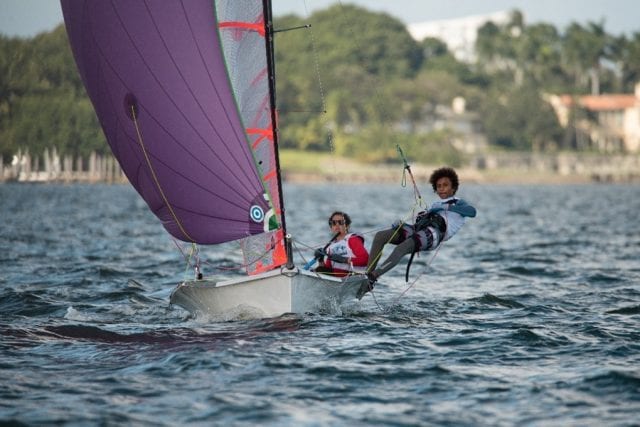
Why “The Skiff Generation”?
Though the learning curve is steep, high-performance classes welcome new sailors into a supportive environment that is more akin to top level racing. Skiff culture is all about sharing best practices across the fleet. We like to say, “there’s no secret recipe.” Sailors of all stripes work together to raise the bar. It is a more inclusive, national effort rather than club versus club rivalry. We believe a rising tide lifts all boats. As a fleet, we develop bonds and friendships where sailors can share knowledge and information. What this means is that on the race track it all comes down to the athletes’ performance and execution.
That is what inspired us to launch the Skiff Generation Grand Prix Series, the mixing of youth and elite Olympic-class racers together.
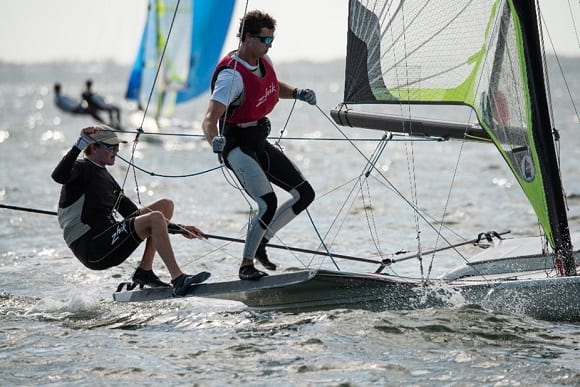
The Skiff Generation Grand Prix, a brand new training platform for U.S. high-performance sailing development, features three skiff classes in one regatta: the 49er, 49er FX, and the 29er. 29er sailors get to share the race course with top American sailors in their own progression towards the Olympic-class boats.
My personal sailing history is unique. I was lucky to grow up with an Olympian as my neighbor and coach. That proximity gave me the opportunity to train with him and his training partners, all of whom were the best sailors in the world at the time. My development in the sport was exponential. I learned at a young age from those at the top of our sport. This format of pushing together youth and elite is part of my personal story and the concept of Skiff Generation Grand Prix is to do the same.
We have put together an ambitious schedule of hosting six events throughout the winter in Miami. We are two events in and the feedback has been overwhelmingly positive. Sailors of all ages love getting together to race. The Olympic-class group enjoys seeing the next generation of youth, and our youth athletes get to walk up to and ask the pros questions right in the boat park. It is a very cool experience.
How does getting involved in skiff sailing as a youth sailor help them transition into the adult world of one design sailing?
The skills we focus on and develop in high-performance racing embolden sailors to succeed in sport and life. The speed and pace of racing forces you to be forward thinking. I spent a lot of time as a youth sailor talking to myself, frustrated while slogging around the course. Learning to focus on a solution rather than the problem is what high-performance racing is all about. Something is going to go wrong, and it is up to you to put the fire out and get back to racing. If that is not a metaphor for life I don’t know what is.
As far as life opportunities, high-performance sailing opens doors. Our role at 2NINER is to develop and connect talent to a larger network of experts within our sport. Whatever a sailor’s goal or interest, we support them and introduce them to our larger sailing family. Graduates of our youth program are current Ivy-League collegiate athletes, Olympic-class campaigners, professional sailors, and World Champions.
What does the future hold for these youth sailors as they grow up? Is the vision that they stay in skiffs or foiling boats? Or are they learning skills from skiffs that can be transferred across classes?
The 29er class is a direct pipeline to next level sailing. Crews develop explosive strength, coordinated accuracy and precision hand and footwork. Sail trim is an ever-moving target in apparent wind sailing, it takes a lot of focused training to manage so many things in order to constantly put the sails in the sweet spot.
Skippers develop a heightened sense of feel and awareness of performance of the boat. The skipper’s ability to put the boat in the right spot and remain calm, cool and collected under pressure is a skill every human needs.
Communication between the helm and crew is everything. To be in harmony with the boat and each other, and then scan the water to make split second tactical decisions requires a depth of skill that prepares athletes for any challenge our sport has to offer.
So, what does the future hold?
The future is fast. after practice we go foiling or kiting for fun. these skills require dynamic athleticism learned by trapezing, hoisting and trimming while on the knife’s edge prepares athletes for the next level..
Skills of teamwork, communication, and discipline are welcomed universally. Take a quick scan of the pro circuit Etchells, Melges, and J fleets and you will find high performance sailors scattered throughout.
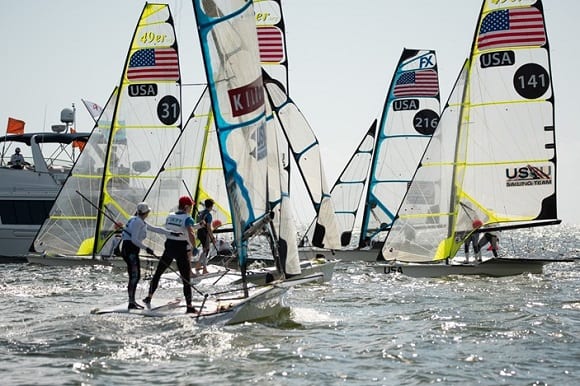
If you want to get involved, find us at 2NINER.org. We offer year-round programming in Miami. And in 2021 we will host a series of clinics around the country. We are also planning to take the Skiff Generation Grand Prix on the road, coming to a venue near you. It is our privilege to share skiff sailing with those who are up to the task.
Please visit One Design Central for more one design sailing resources and information .
A Message from 2NINER We at 2NINER want to extend our deepest thanks to title sponsor, The Kolter Group, for their support and commitment to making this dream a reality. We could never have attempted this endeavor without their support. We also thank our supporting sponsors 49er.ca, Zig Travel, iUniforms, and Sailing Performance Training.
About the Author Phil Muller is the head coach and founder of 2NINER , a high-performance sailing program based in Miami, US Sailing Olympic Development Program and Youth Worlds team coach, and organizer of the Skiff Generation Grand Prix.
* All photos courtesy of 2NINER
Copyright ©2018-2024 United States Sailing Association. All rights reserved. US Sailing is a 501(c)3 organization. Website designed & developed by Design Principles, Inc. -->
29er High Performance Skiff
29ER AT A GLANCE
A TRUE HIGH-PERFORMANCE SKIFF
The 29er is a two-person, single trapeze dinghy with an asymmetric spinnaker and a lightweight hull. It was designed by Australian skiff legend Julian Bethwaite with a team of internationally recognised dinghy sailors including Dave Ovington. The boats are durable, well equipped and fully competitive straight out of the box.
The rig is pure skiff, fully battened sails with a self-tacking jib, supported on a composite tipped mast that gives the ultimate in gust response and acceleration. Combine this with the asymmetric spinnaker and you’ll discover the 29er is pure dynamite downwind. Other features include a mainsail cuff to increase sail efficiency, a ram kicker/ vang, safety foot/ grab rails and an enclosed transom.

| Fitted Hull Weight | 72kg |
| Length | 4.45m |
| Width | 1.77m |
| Mast Length | 6.25m |
| Upwind Sail Area | 12.5sqm |
| Spinnaker Area | 16.83sqm |
| Designer | Julian Bethwaite |
| Year Designed | 1998 |
| Number of Sailors | 2, Single Trapeze |
| Ideal Racing Weight | 110-130kg |
Association Link 29er.org

29er Complete boat with everything needed to sail
- Fully fitted and roped hull (Allen fitout w/Harken spinnaker ratchets)
- Complete mast (Including halyards, wires and trapeze)
- Boom with vang shoe
- Rudderstock & tiller with alloy extension
- Full set of sails
Price: £14,600.00
(£12,166.67 ex. VAT)
29er Complete rollaway package
- Complete boat package
- Under cover
- Launching trolley
Price: £14,900.00
(£12,416.67 ex VAT)

Allen P Clip – 5mm

30mm Dynamic double block

30mm Linked block

Fast Pin – 5mm Dia
Looking for something else, we sell parts & spares.
From sails to rigging, mast fittings and covers.
TERMS & CONDITIONS

Making a move to the 29er? Get the low-down from George and Seb
- 29er , News Categories , just FAST , Latest News , Tuning Guides
Are you trying to figure out next steps after junior sailing? We recently caught up with George Lee Rush and Seb Menzies, (29er European Championship winners 2022, and NZ National Champions 2021 / 2022) to ask them about sailing the 29er.
WARNING, there’s a bit in this for parents to consider as well….

What made you decide to sail a 29er?
Mainly the fun aspects of sailing a skiff and apparent wind sailing. Apparent wind skiff sailing is very different to sailing displacement dinghies, with a lot more passing lanes and opportunities especially downwind, so the racing is a lot of fun and multiple lead changes are often possible. It is a very difficult Class to dominate as a result, so the racing is always exciting and a lot of fun. You also need to learn to be pretty robust, as you can be doing very well in a race only for changes in conditions to have a much more magnified effect on the race outcome than you will get in slower fleet racing.
How long have you been sailing a 29er for?
Seb – on and off for 3 seasons or so. George - since 2019/2020 season. Of course Covid dramatically affected much of that time, with no overseas opportunities in particular until this year.
What are the main aspects you like most about sailing the 29er?
As per question 1. Also the boat is straightforward to rig and set up and is very reliable. The class is strict one design including all foils and sails, so no real risks of arms-races on spending on gear. Even older boats that have been well looked after can be pretty competitive so it is a very level playing field on the gear front, leaving it up to the sailors to compete mainly on sailing ability. It is generally a much more relaxed class than some others! Both parents and sailors tend to be a bit more chilled, and the class is probably more sailor-driven than some of the other youth classes, especially with some of the older crews involved. There is a huge 29er scene in Europe in particular with a very high level of competition, so that is also great if you are able to tap into that.
What were the most challenging aspects to learning how to sail a 29er?
Initially mainly the stability of the boat – it has a very narrow waterline and relies on dynamic movement, trim and careful weight placement to keep it upright. Also gybing in strong winds is a challenge to learn (and is a an ongoing challenge even for experienced crews). Downwind in big waves can also be exciting, with a need to steer aggressively around waves to avoid going over the handle-bars. Sailors coming from a displacement boat background also need to learn a very different style of sailing from a tactics/strategy point of view.
What are the most challenging aspects of sailing the 29er now?
At the highest level, getting off the start line reliably in good shape is critical especially in light breezes and always a challenge in strong overseas fleets in particular. Moding the boat is also very important, and significant gains can be made with learning to do this effectively particularly with downwind sailing in puffy/shifty conditions. Keeping the boat upright in strong breezes and big seas downwind (and in gybes) is a continuing challenge no matter how experienced you are. As you get to the higher levels, the little things start to count more, such as transitions through gybes and the subtleties of trimming, trapping and moving around the boat.
Do you have any tips for 29er sailors starting out?
Lots (too many to list, so best for sailors starting out to come and have a chat). Find an experienced sailor and have a long chat with them to start with (and really listen to what they have to say). Some other tips:
- New helms should ideally try to find an experienced crew to start out with. It is much more of a challenge to learn to sail a 29er if you are both new to the boat. You will spend much more time swimming than is ideal! Experienced Opti/Starling sailors will adapt to the boat quickly, but to do this effectively you need a good crew. Finding good, experienced crew at the right weight for small new sailors can be quite a bit challenge in the class at times.
- Ideal weight range is approx. 120 – 130kg, with a much smaller helm and larger crew the ideal setup. Some crews sail as light as 110kg (and overseas there are quite a few crews even under this, which is fine in light European conditions but more of a challenge in typical NZ conditions). Anything under 115kgs and you will struggle in 12 knots plus. The boat is actually quite weight-tolerant and if you are experienced and know how to sail it well in light breezes you can still be very competitive over 130kgs. We have not weighed ourselves for a while now but would be close to 140kgs.
- Focus on pairing up with someone you think you will really enjoy sailing with. A harmonious crew relationship is absolutely critical to performing well, and will be more important in the long run than focussing solely on finding that “gun” crew member who you may or may not be compatible with. You can develop together. You spend a lot of time together and personality issues can have a major detrimental effect on performance.
- Get out in the full range of conditions and just put the hours into sailing as much as you can. There is just no short-cut here. Do heaps and heaps of manoeuvres. Race every opportunity you get. There is absolutely no substitute for hours in the boat. Don’t get bound up in spending heaps of time and money on coaching. You can work out a lot by yourselves, especially sailing as much as possible with other good/experienced boats.
- When looking for a boat, be a little wary of the cheap battler – some of these can be pretty heavy and you will spend far too much time off the water with broken/unreliable gear (and end up spending a fortune replacing it). It is worth paying for a good newer boat and you will get your money back in spades when you sell. Pay particular attention to foils, masts and sails in particular when buying a secondhand boat. A boat with a near-new set of sails or two sets of sails is potentially worth quite a lot more than a good boat with worn-out sails (sails are quite expensive). Jibs in particular don’t last that long.
Do you have any tips for parents of 29er sailors starting out?
Crewed boat sailing brings a whole range of new challenges for those coming from solo boats. For a pairing to be successful you need:
- Crew compatibility on the personality front;
- Some measure of crew compatibility on the ability front (respect for each other’s sailing ability is really key as lack of this quickly causes cracks in the relationship);
- Crew compatibility in terms of ambition – how hard do you want to go, what racing programme do you want to adopt, how many hours are you prepared to put in, where does sailing/racing sit in terms of priorities in your life?
- Parent compatibility – this is almost as important as crew compatibility and extends to the same things e.g. how much money are you prepared to spend (!), how much time do you want to put in, how much do overseas plans feature in the mix, are your parenting styles compatible etc. Both parents and crews will potentially spend a LOT of time together and you need to get on well, enjoy each other’s company and have fun, otherwise it won’t last. Uneven contributions, money issues and parents going off the rails can sink any campaign pretty quickly! Above all, remember it is a sport and meant to be fun/enjoyable, and if that goes the wheels will fall off quickly.
Another major consideration is that the whole youth sailing scene is characterised by constant change: the sailors are at a stage of their lives where they are growing and changing significantly every year (physically and mentally), and their plans and ambitions can also change quickly. It is a real challenge in a crewed boat matching up sailors of the right size (plus all the other characteristics mentioned above) while sailors are growing and changing so quickly.
There is also the youth age limit to consider. No sooner will you have the magic pairing at the right weight, than they will get too big for the boat (or too old) and you will have to change! Most 29er sailors will sail with at leas 2 or 3 combination during their 29er career, and this is just a fact of life. The whole scene is one of constant change and it is necessary to be flexible, take good advice and be open with each other. With so many pairing changes being just part of the scene it is also a challenge to maintain parent relationships when crews break up/pair up. Honesty, openness and behaving decently are key here, and you need to keep your big boy/girl pants on at all times!
This is also a stage of sailing where you need to learn to start to pull back as a parent. Youth sailors are not so keen on the parents hanging around getting in the way (it interference with their important social interactions in the boat park). So, it is necessary to make some changes to the way you support your sailors and move from the foreground to the background (a challenge for some parents!!).
Thanks Seb and George.
Are you sure you want to change currency?
Technical/Rules
The latest 29er Class Rules are now available. Effective 8th January 2019.
Introduction
Welcome to the Technical page. Class Rules ensure the integrity of the strict one design nature of our Class. The process is managed by Barry Johnson who is Chair of the Technical Committee. Barry has been involved with the sport of sailing since he was 10 years of age beginning with local dinghy classes in Western Australia then graduating to Keelboats. He has been selected for 6 Olympic Games as the Int 49er Class Measurer. He is very approachable and always happy to answer any questions you may have concerning anything on this page. Contact Barry .
Read a short biography about Barry here.
Class Rules
The International 29er Class Rules can be found in the full class rules document
29er hulls, hull appendages, rigs and sails are manufacture controlled and shall only be manufactured by licensed manufacturers – in the class rules they are referred to as licensed manufacturers. Equipment is required to comply with the International 29er Builders Construction Manual and is subject to a World Sailing approved manufacturing control system.
29er hulls, hull appendages, rigs and sails may, after having left the manufacturer, only be altered to the extent permitted in Section C of the class rules.
Owners and crews should be aware that compliance with rules in Section C is responsibility of the sailor. Rules regulating the use of equipment during a race are contained in Section C of these class rules, in ERS Part I and in the Racing Rules of Sailing.
Download the FULL class rules as a PDF (460k)
Class Rule Changes Effective 07/02/2024
Download Red Rhombus Rule and diagram (80k)
Download National Letters & Numbers on 29er Sails (115k)
Statement on GRP foils
Statement on Sail Royalty Labels
Amendment one C.3 Personal equipment Effective 21/08/2021
Amendment two C.3 Personal equipment Effective 01/04/2022
Amendment C.5.1(c) Portable Equipment Effective 07/07/2023
Amendment one C.5.1(c) Portable Equipment 18/07/2023
Measurers (World Sailing Approved)
| Barry Johnson (Chair) | AUS | [email protected] |
| Ajit Diaz | IND | [email protected] |
| Agnes Lill | EST | [email protected] |
| Alain Champy | FRA | [email protected] |
Approved Amendments by World Sailing
| Description | Date effective | Document |
| Turnbuckles | Jan 2015 | |
| Blades, trap lines, sail numbers | Feb 2012 | |
| Sail numbers | May 2010 | |
| Thwart | June 2007 | |
| Various | Jan 2007 |
10% Off Hobie Parts / 15% Off Rigging / 10-15% Off Select Kayaks - SHOP NOW

- Call Us +1-503-285-5536
- Sign in & Register
- Recently Viewed
Ovington Boats
- Create New Wish List
Write a Review

Contact us today to order your boat for the sailing season! Email: [email protected] Call/Text: 503-285-5536
Frequently Bought Together:
Description.

The ultimate skiff for youth sailors, the 29er is used worldwide for one design racing and getting kids into high performance sailing.
The high performance boat everyone thinks of when talking about moving youth sailing forward. The legendary 29er is a double-handed performance skiff for youth training and racing. Designed by Julian Bethwaite (Olympic 49er designer), the 29er provides a stable, user-friendly pathway into the thrill and techniques of skiff sailing. An asymmetric spinnaker, mylar main, jib, and trapeze provide speed without sacrificing control in breezy conditions. Used worldwide for youth one design racing, the 29er has an active class association working to get more kids into higher performance sailing.
- Fiberglass construction with a unique foam sandwich to create a lightweight yet strong hull
- Self-draining cockpit
- Non-skid on the wings for grip
- Sand blasted deck for greater grip while tacking
- Molded-in safety cockpit rails for skipper
- Gnav system to open up cockpit and better control leech tension
- A single line hoists the spinnaker, sets the pole, and retrieves both
- Centerboard and rudder are both high-quality GRP construction
- Centerboard case padded top and bottom to max allowable width to reduce the blade from fluttering
- Sails made from long-lasting, reinforced mylar ensuring that they will not tear when a crew member falls on them in a capsize
- Self-tacking jib
- Asymmetric spinnaker included
- Composite-tipped mast gives the ultimate in gust response and acceleration
Click Here to Request a Quote
You can also reach us at [email protected] or by calling 503-285-5536 ext2
Specifications
- Weight - 74kg
- Length - 4.45m
- Width - 1.77m
- Mast length - 6.25m
- Main & Jib Area - 12.5sqm
- Spinnaker Area - 15sqm
- Designer - Julian Bethwaite, 1998
- Hull - FRP with foam sandwich laminate
- Mast - Composite top section with aluminium alloy lower sections
- Sails - Fully battened mainsail and jib made out of Mylar film by MacDiarmid Sails. Tri-radial asymmetric spinnaker
- Shop Parts & Accessories
- Rigging Guides
- Parts Locators
Why West Coast Sailing
We represent a dozen sailboat brands from all around the world. Our dinghy sailboat inventory is second to none, with at least 100 boats in stock in our warehouse at any time. Our staff has extensive experience sailing, racing, rigging, coaching and delivering boats worldwide. This is what we do:
- Selection – 70+ models of boats from manufacturers around the world.
- Service – Our staff is focused on helping you Own The Water.
- Experience – The team here has decades of experience on all types of dinghies.
- Inventory – Over $1million of boats and parts inventory in stock at all times.
- Logistics – We have experience shipping boats all over the world, at reasonable rates, quickly.
- Rigging – We rig most boats by hand, and stand behind our work.
- Long Term Support – We are a leader in our industry, and we didn't get here by cutting corners. We have your back.
- Apparel and Accessories – We have the apparel, accessories, trailers and dollies to go with each boat.
Product Reviews
Shipping & returns.
Delivery Info: Enjoy Free Standard Shipping on most orders* to the Continental United States over $99. Our Standard Shipping method utilizes USPS, UPS, and FedEx to send packages near and far. Oversize/Freight shipping (where applicable), Expedited Shipping (where available), and rates to other destinations will be calculated at checkout.
See our Shipping Page for more information (and exceptions).
Returns Info: Your 100% satisfaction is our goal - we want you to love your sailing gear, but if something doesn't work out, we accept returns on most new, unused items*. Returns can be made within 366 days (1 year + 1 day) of your original order date. Exceptions include (and are not limited to) cut line, Rig Shop products, special order items, numbered sailors, and items used or worn sailing.
See our Returns Page for more information.
Prop 65 Warning
Related Products

29er Deck Cover - Mast Down (Fast Canvas)
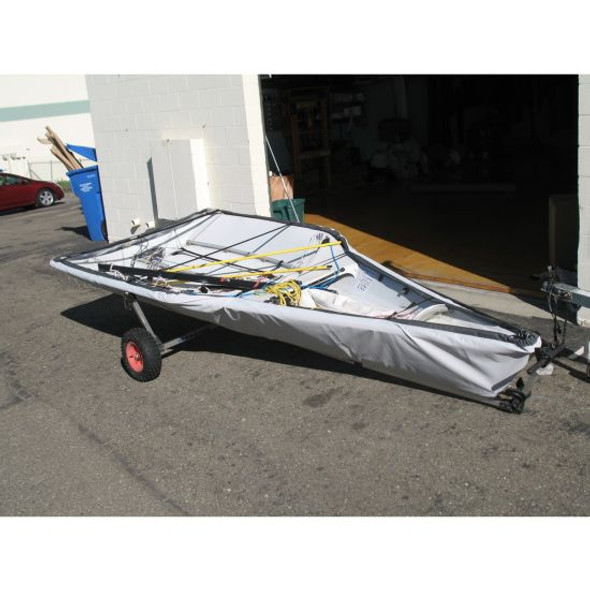
29er Hull Cover (Fast Canvas)
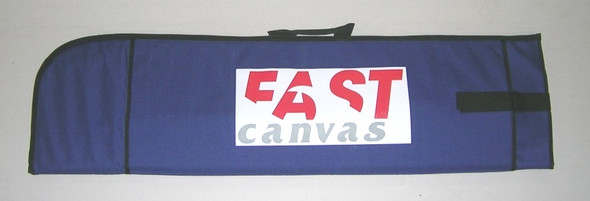
Fast Canvas Blade Bag (29er / Tasar)
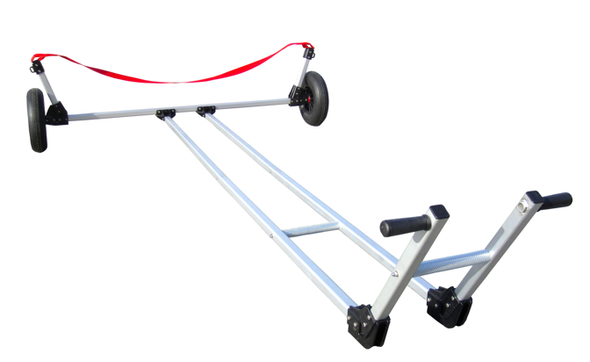
29er Sailboat Dolly (Double)
Subscribe to our newsletter.
Sign up for our newsletter to receive exclusive discounts, new product announcements, and upcoming sales.
WHERE TO FIND TRAINING
Where to find racing.
- WHERE TO FIND EQUIPMENT
- 29er CLASS RULES
- JOIN US 29er CLASS
- JOIN INTL 29er CLASS
- JOIN US SAILING
- JOIN CLUBSPOT
- US 29er BOARD
- NATIONAL ASSOCIATIONS

HOME OF THE USA
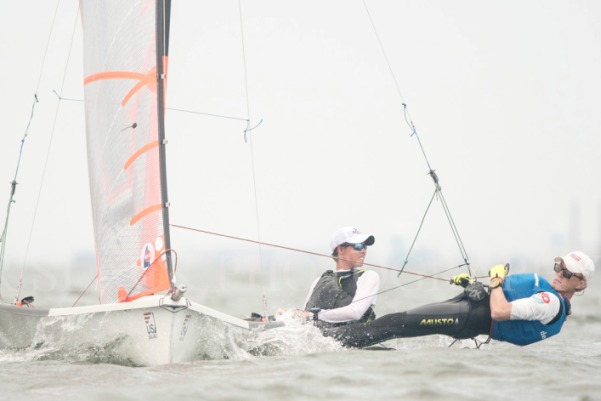
COLLEGE ALUMNI
The 29er class alumni has more than its fair share of talented sailors who went on to fantastic schools, were recognized as All Americans collegiate sailors and/or endeavored to launch Olympic campaigns. As your sailors look for inspiration and advice they can reach out to their peers who paved the way.
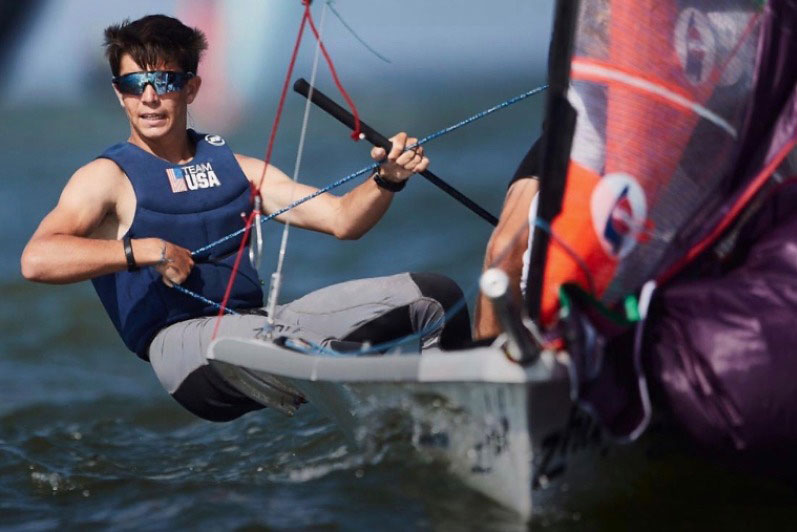
The 29er Class showcases 40+ annual events nationally with a full calendar of clinics and regattas to support fleet development and an exciting critical mass of local racing. All 29er Class events are open competition. International regattas often with 100-200 entries and 1/3 female teams offer some of the world’s most competitive one design racing for youth sailors representing Team USA abroad.
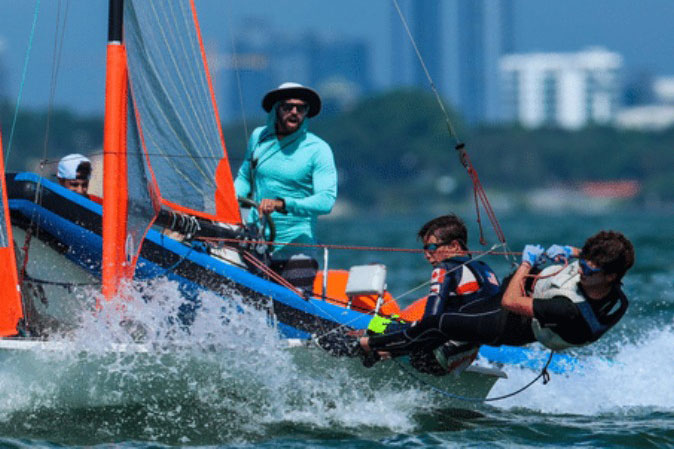
Learn to sail a 29er in a local squad. Coaches and sailors work together as a fleet and often host sailors traveling in from other regions for training and racing. All squads race and train year-round with a number of the northern teams seasonally relocating south to Miami for the winter. Find a squad in your area.
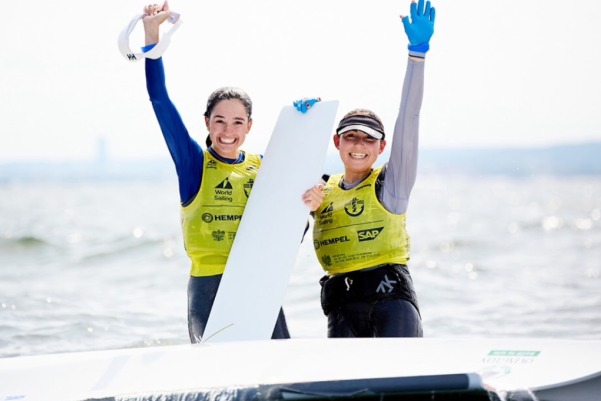
WOMEN'S 29er SAILING
The 29er class is a showcase for the development of woman’s competitive sailing. Almost a 1/3 of the international fleet is represented by all woman teams. Berta Puig (Miami, Fla.) and Bella Casaretto (Ft. Lauderdale, Fla.) took gold for Team USA in the woman’s 29er fleet at ISAF Youth Worlds in 2019. The 29er is the pathway class to the Woman’s Olympic 49er FX.
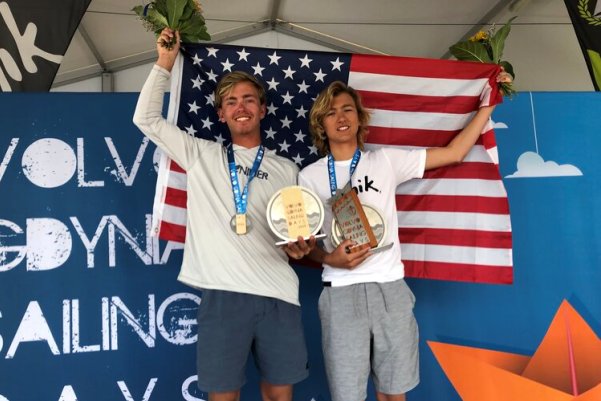
29er WORLD CHAMPIONSHIPS
The 29er Open Worlds is held annually at rotating global venues. Competition is open to all International 29er Class Members. With annually participation well in excess of 150-200 entries, competitors rank into Gold, Silver and Bronze fleets for medal rounds. The top 20 sailors earn the right to compete with their finishing place as their sail number between events. Team USA has been well represented on the podium with the best of 29er sailors in the world.
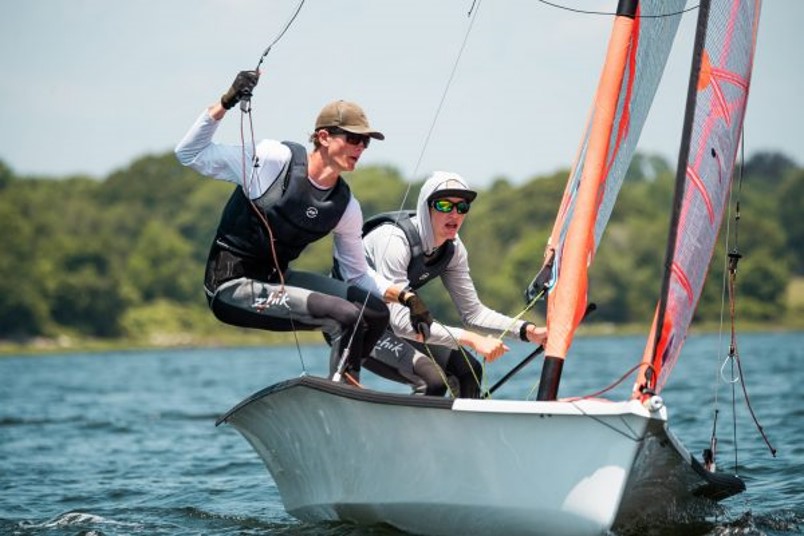
One-design, double-handed, single-trapeze skiff with a fully battened mainsail, self-tacking jib and asymmetric spinnaker. Teams compete as men’s, women’s and mixed pairs. Skiffs are fast and fun. The 29er provides an Olympic pathway to the Men’s 49er and Woman’s 49erFX.
LEARN MORE HERE

IMAGES
VIDEO
COMMENTS
The 29er is a two-person high performance sailing skiff designed by Julian Bethwaite and first produced in 1998. Derived from the Olympic class 49er class, it is raced in the ISAF Youth Sailing World Championships. [3] The 29er is able to reach high speeds fairly quickly by having a sleek and hydrodynamic hull and will often exceed the wind speed when planing both up and downwind.
Hull Speed: The maximum speed of a displacement hull (referring to a hull that travels through the water rather than on top of it, e.g. planing). HS = 1.34 x √LWL (in feet) Pounds per Inch Immersion: The weight required to sink the yacht one inch. Calculated by multiplying the LWL area by 5.333 for sea water or 5.2 for fresh water.
Former college sailor and current 29er sailor Dan Goldman loves the competition and speed of the 29er, "The boat is fun to sail because it is fast and challenging. The most challenging part [of 29er sailing] is keeping the boat upright in 20+ knots [of wind]."
The 29er gives you exciting, fun sailing wherever you are across the globe! It's a one-design, double-handed, single-trapeze skiff with a self-tacking jib and asymmetric spinnaker which all adds up to give you one of the most exhilarating sailing experiences you can have. We believe it gives you the best youth sailing in the world!
The 29er is a high-performance two-person skiff that challenges sailors with its speed and agility. Find out more about this thrilling class, its rules, events and rankings at World Sailing.
#dinghyracing #29er #sailing #toptips #speed #fastIf you liked this video, give it a thumbs up and share it with your friends. 👍Follow us on Instagram: htt...
29ER is a 14′ 7″ / 4.5 m monohull sailboat designed by Bethwaite Design and built by Ovington Boats Ltd., MacKay Boats Ltd., Performance Sailcraft, Xtreme Sailing Products, and Nautivela starting in 2001. ... The lower a boat's ratio is, the less power it takes to drive the boat to its nominal hull speed or beyond. Read more. Formula. D/L ...
The 29er sailboat is a dynamic and high-performance double-handed skiff designed for competitive racing, particularly popular among youth sailors. Measuring 4.45 meters (14 feet 6 inches) in length, the 29er features a lightweight yet sturdy construction, enabling it to achieve impressive speeds across a variety of wind conditions. With its ...
1. Design: The 29er was designed by Julian Bethwaite and first launched in 1998. It is a modern, lightweight, and high-performance skiff with a sleek hull shape and a powerful sail plan. 2. Size and Weight: The 29er has an overall length of 4.45 meters (14.6 feet) and a beam of 1.77 meters (5.8 feet). It weighs around 77 kilograms (170 pounds ...
The 29er is a two-person high-performance sailing skiff designed by Julian Bethwaite and first produced in 1998. The 29er is able to reach high speeds fairly quickly by having a sleek and hydrodynamic hull and will often exceed the wind speed when planing both up and downwind.
29er. November 30, 1999 by Sail1Design Editor Leave a Comment. More of an advanced boat, the 29er is a fast skiff designed by Julian Bethwaite and first produced in 1998, and is the little sister to the 49er. It is targeted at youth, especially those training to sail the larger 49er. It has a single trapeze and an asymmetric spinnaker much like ...
The Boat. The 29er was designed by Australian skiff legend Julian Bethwaite, with a team of internationally recognized dinghy sailors. Although the design was originally targeted to youth sailors as a feeder class to the Olympic 49er, the 29er is a "super class" on its own merits. The optimal combined crew weight is considered to be 120 - 145kg ...
major new force in youth sailing and high performance training. With a completely fitted hull weight of only 70kgs, simple control systems and amazingly light rig loads, the 29er delivers a package that gives girl teams and lightweights of all ages equal opportunities to get to the top of the world. 29er ovington world class builder 105 boats from
Kept close to centre downwind to keep the mast up, spinnaker luff on and steering balanced. 2. Jib sheet More jib = more power. Too much jib = stall. Sheet cracked 1-2 to breathe when required (ie. chop, gusts, speed). Eased completely on tight spinnaker legs to get height. Eased lots downwind keeps the bow up. 3.
The 29er was designed and brought to life in 1998 by Australian skiff legend Julian Bethwaite. By the year 2000, the 29er had already become a recognised World Sailing class, and the class has now grown from 200 boats back then to over 3000 today. With nearly 200 boats competing at each World and European Championships we have a growing global ...
Welcome to the 29er Class. Welcome to a world of spectacular, high-performance youth racing in a double handed, single trapeze skiff. We are a thriving, one-design sailing community, boasting a rapidly growing 38-country membership from across all continents. This is the boat for fun, fast, dynamic sailing!
The 29er is the small version of the Olympic class men's 49er and women's 49erFX. It is a two-person skiff where the crew trapezes while the skipper hikes from the wing. The low-profile hull is lightweight (185 lbs) with an oversized sail plan, making the boat very sensitive and powered up for the crew. The 29er is tippy and more difficult ...
The 29er is a two-person, single trapeze dinghy with an asymmetric spinnaker and a lightweight hull. It was designed by Australian skiff legend Julian Bethwaite with a team of internationally recognised dinghy sailors including Dave Ovington. The boats are durable, well equipped and fully competitive straight out of the box.
There is also the youth age limit to consider. No sooner will you have the magic pairing at the right weight, than they will get too big for the boat (or too old) and you will have to change! Most 29er sailors will sail with at leas 2 or 3 combination during their 29er career, and this is just a fact of life.
A 29er doesn't do much over 20kts, and a moth much over 25kts. I have always guessed (but never GPS verified) a top speed of around 12-14kts. Could be wrong, I guess on a 30+ knot day, with a big dude at the right angle you coudl do 16kts, but yeah, just seems rather high for our dear old Laser!
Equipment is required to comply with the International 29er Builders Construction Manual and is subject to a World Sailing approved manufacturing control system. 29er hulls, hull appendages, rigs and sails may, after having left the manufacturer, only be altered to the extent permitted in Section C of the class rules.
Composite-tipped mast gives the ultimate in gust response and acceleration. Click Here to Request a Quote. You can also reach us at [email protected] or by calling 503-285-5536 ext2. Specifications. Weight - 74kg. Length - 4.45m. Width - 1.77m. Mast length - 6.25m. Main & Jib Area - 12.5sqm.
The 29er class is a showcase for the development of woman's competitive sailing. Almost a 1/3 of the international fleet is represented by all woman teams. Berta Puig (Miami, Fla.) and Bella Casaretto (Ft. Lauderdale, Fla.) took gold for Team USA in the woman's 29er fleet at ISAF Youth Worlds in 2019. The 29er is the pathway class to the ...